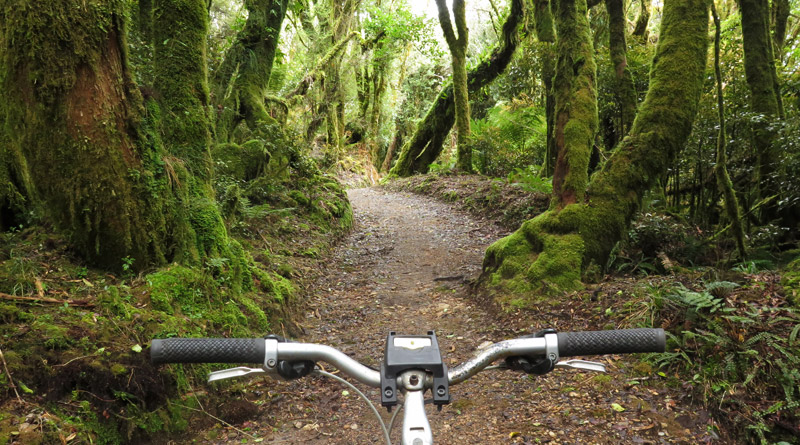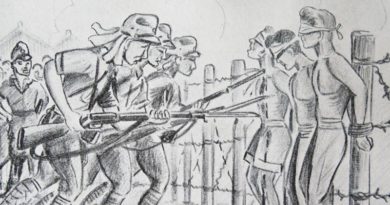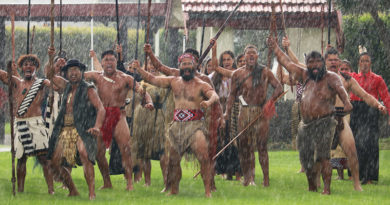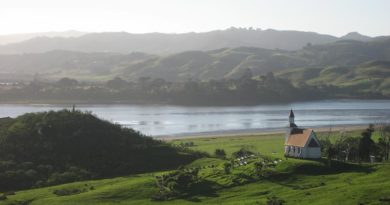How to ride New Zealand’s Timber Trail without blowing your budget — or busting a gut
A boom in purpose-built mountain bike trails around the country is turning New Zealand into a Mecca for off-road cyclists.
Those trails include, but aren’t limited to, the national network of cycle trails known as Ngā Haerenga.
Of the 23 “great rides” that currently make up Ngā Haerenga, I reckon the two-day, 85km Timber Trail has to be one of the standouts.
That’s because (a) it passes through some of the best-preserved podocarp forest in the country, (b) it’s teeming with history, vertigo-inducing suspension bridges and other engineering feats, and (c) it’s just challenging enough to be interesting for experienced riders but not so much that novices like me can’t handle it.
Most of the trail passes through Pureora Forest Park, which is located in the central North Island’s King Country northwest of Lake Taupō.
The Timber Trail can be ridden in luxury thanks to an off-grid eco-lodge at the halfway point offering full board and a comfortable bed. Staying at the lodge also means you don’t have to carry your food and camping gear on your bike, which I reckon can make the difference between a joyless slog and a pleasurable ride.
But it turns out you can also ride the Timber Trail on a budget, get back to your vehicle with ease and avoid lugging all your gear over a mountain. Read on to find out how.
Riding the Timber Trail
The trail can be tackled in either direction but my number-one piece of advice — unless you’re a special kind of masochist — is to ride it north to south, from Pureora to Ōngarue.
That way you get worst of the climbing out of the way in the first morning (from just over 500m to the highest point at 971m above sea level) and spend much of the next day and a half coasting downhill.The trail is graded 2-3 (easy-intermediate).
I rode it on a road bike which wasn’t ideal but it was doable, as long as I took it easy on the roughest sections and avoided the worst patches of slippery clay.
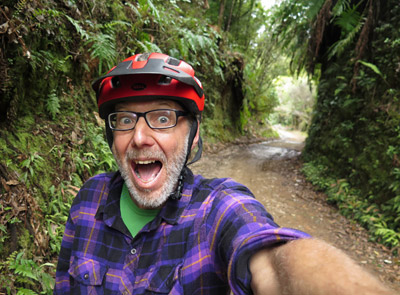
The first day is about 40km long and the second 45-50km, depending on where you finish.
The trail starts at Pureora, on an unsealed road off State Highway 30 between Mangakino and Maniaiti/Benneydale. It’s about 80km northwest of Taupō and 55km southeast of Te Kuiti.
The turnoff from SH30 is Barryville Rd (if you’re coming from Mangakino/Taupō) or Maraeroa Rd (coming from Te Kuiti). Not that you need to bother with that if you’re using the shuttle service.
Pureora used to be a bustling forestry settlement but these days there’s just a few homes, a Department of Conservation research base (but no information centre), a parking area and public toilets. There’s a short but rewarding forest loop walk if you have half an hour to spare.
You can’t miss the trail entrance because, well, that’s just about all there is at Pureora.
The best forest of the entire trail is in the first 5-6km, where you’re dwarfed by the kind of towering podocarp forest that once covered much of the central North Island. (Podocarps are an ancient family of trees harking back hundreds of millions of years to the super-continent of Gondwana. The best-known species are rimu, kahikatea, miro, mataī and tōtara.)
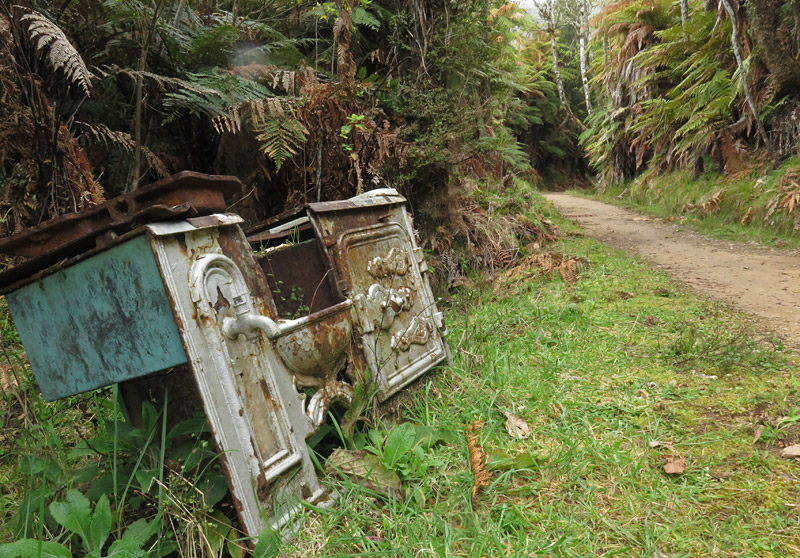
Pureora was the last major tract of native forest to be logged in New Zealand. Along with Fiordland’s Lake Manapouri, it was also the cradle of New Zealand’s environmental movement.
During the 1980s a group of environmental activists led by Stephen King (the barefoot conservationist, not the American suspense writer) occupied platforms high in the tallest trees. Logging was suspended when the tree-sitters refused to come down and abandoned altogether as public opinion swung in the protesters’ favour.
These days the remnant forest is teeming with birds, especially kākā. The screeching call of this raucous forest parrot is likely to be the soundtrack for your first day’s ride.
After a few kilometres the track passes through an area where the forest was cleared in the 1970s. The scrubby wasteland that remains is slowly regenerating but it’s a sorry contrast to the lush forest at the start of the trail.
Around the 12km mark, after a steady uphill slog, the trail passes through a cloud forest of stunted trees covered in thick moss and often shrouded in mist.
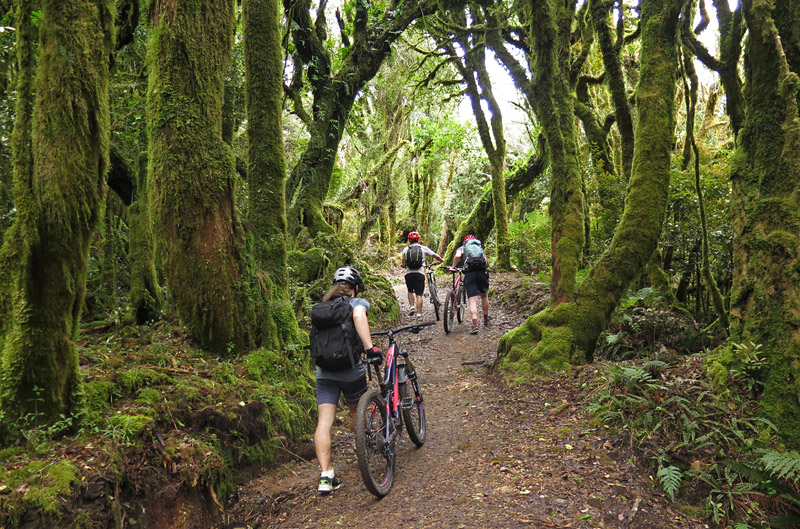
From the high point, at the 14km mark, a rough side track not suitable for bikes leads to 1135m-high Mt Pureora. Decent walking shoes plus a spare hour and a half are required if you want to tackle the summit.
The next 8km is an exhilarating downhill run on mostly gravel tracks through the forest. At the 22km mark the trail crosses Bog Inn Creek and the first of many impressively engineered suspension bridges.
At my modest pace it took about five hours to cover the 40km to the halfway point at Piropiro.
Another one-time forestry settlement, Piropiro has three accommodation options: The off-grid luxury of the Timber Trail Lodge; a “glamping” called Camp Epic (BYO food); and a free Department of Conservation campground (BYO everything). More about those options later.
At 45km, day two is slightly longer and follows a mix of old forestry roads, muddy bush tracks, newly laid gravel paths and a historic bush tramway built in the 1930s to supply workers’ camps and haul logs out of the forest.
The tramway, with its gentle gradient and impressive cuttings, is a cyclist’s dream. Only the forestry roads make unpleasant riding.
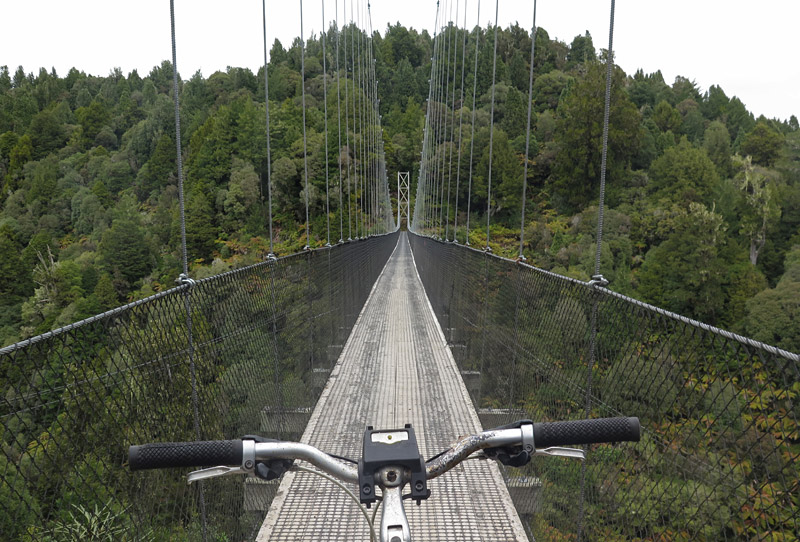
Day two also offers more spectacular bridges, including one over Maramataha Stream, which, at 141m long and 53m above the riverbed, is the third-longest suspension bridge in New Zealand.
From the 68km mark riders are treated to another exhilarating downhill run and then, around 75km, another engineering marvel.
The recently restored Ōngarue Spiral, like a miniature version of the Raurimu Spiral on the North Island’s Main Trunk Line, allowed timber locomotives to gain 43m of elevation over a short distance. It’s worth bringing a torch or headlamp to light your way through the spiral’s tunnel.
The final, undulating section of trail follows a somewhat degraded stream through farmland and plantation forest, emerging at Bennett Rd where you’ll find a campground, car park and toilet. From there it’s about 2km on a sealed road to Ōngarue settlement.
The Timber Trail the easy way…
The easiest, and by far the most comfortable, way to do the Timber Trail is to buy a package through the Timber Trail Lodge.
The package includes a shuttle to the start point, two luggage transfers, quality accommodation, and all meals except lunch on the first day. Pretty much all you need to do is pedal.
A one-night, twin-room package starts from $265 per person (October 2022 price), which I reckon is a pretty good deal. It can’t be cheap providing quality accommodation in such an isolated spot.
The catch is that if you’re a solo traveller you can’t split the cost of a room, so you end up paying a minimum of $385.
… and on a budget
But what if money’s tight? Or, like me, you have no friends and can’t share a room at the lodge?
As long as you’re prepared to sleep in a tent, it turns out you can ride the Timber Trail cheaply and avoid he buzz-kill of lugging all your gear on your bike.
All you have to do is book a shuttle with Timber Trail Shuttles, arrive at their Ōngarue base by 8am, tell them you’re camping and ask them to drop your gear off at Piropiro. (You can find Timber Trail Shuttles at 26 Ōngarue-Waimiha Rd. The entrance is next to a large gravel pit, less than 300m from State Highway 4.)
A minibus will take you and your bike to the starting point at Pureora. All you’ll need to pack on your bike is lunch, water, spare clothing (it gets cold at the high point) and some basic bike tools.
The driver will then drop off your camping gear at the Timber Trail Lodge luggage zone. You don’t have stay the night at the lodge to make use of this excellent service.
When you arrive at Piropiro you just have to follow the well-signposted trail to the lodge, pick up your camping gear, and wobble 700m back down the trail to DOC campground.
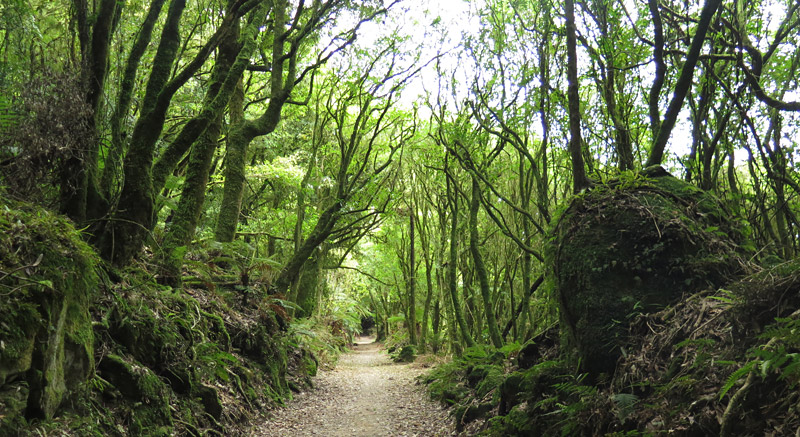
The campground is very spacious but it’s definitely no-frills. The toilets are long-drops and water has to be collected from a culvert and boiled before drinking. There are, however, basic shelters with old-school cast-iron wood burners for cooking or warmth.
The following morning all you have to do is make sure you leave your luggage at the designated collection point at the lodge by 10.30am, and the nice folk from the shuttle company will pick it up and have it waiting for you at their base in Ōngarue by the time you finish the ride.
The DOC campground is free so your only cost is the shuttle which, at the time of writing, was $70 — a great deal considering it includes two luggage transfers.
If you reach the end of the trail and can’t pedal a metre further, a minibus leaves the Bennett Rd car park daily at 1pm and 3pm. That will take you back to your car at the Timber Trail Shuttles base.
If, however, you’re up to a few more kilometres, you can ride about 1.2km to Ōngarue township. (Make sure you cross the bridge and stay on the tarseal. If you find yourself on unsealed Ōngarue Back Rd you’ve gone the wrong way.)
From there it’s another 2km west on Ōngarue-Waimiha Rd to the Timber Trail Shuttles base where your luggage will be waiting. They’ll also let you clean your bike and even make a coffee or have a shower if you need it.
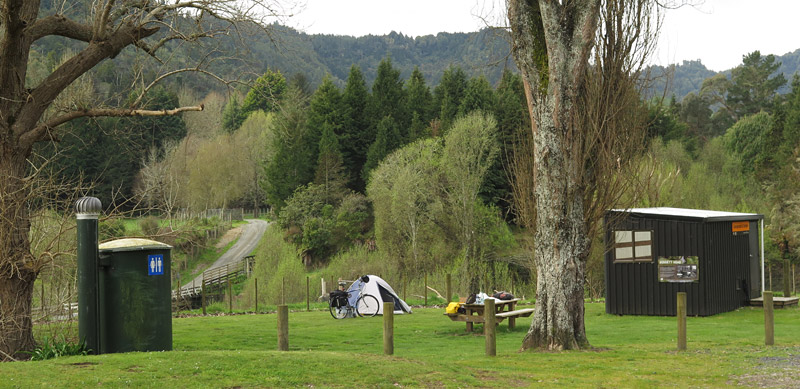
The 8am departure on day one means it’s best to spend the night nearby. If you’ve brought a tent the best option is a small campground next to the Bennett Rd car park where a forward-thinking farmer allows Timber Trail riders and Te Araroa hikers to pitch their tents on his land.
The camp site includes a long-drop toilet, a water supply, and a shelter built by locals for benefit of campers. How’s that for manaakitanga [hospitality]?
Other options
The Timber Trail has a few more accommodation options, including a “glamping” at Piropiro known as Camp Epic.
There campers stay in safari-style tents with comfy beds, hot showers, flush toilets and a fully equipped kitchen. All you have to bring is food.
Camp Epic also has its own shuttle service. Check out their website for more information.
More information
The official Timber Trail website has a plethora of information including a downloadable map and trail notes in PDF format.
You can also download an informative brochure in PDF format from the DOC website or read up on the history of Pureora Forest Park.
Speaking of history, New Zealand Geographic published a short article marking the 40th anniversary of the Pureora Forest logging protests.
The regional tourism website also has Timber Trail information and some fine photos.
Finally, if you want to read more about great bike rides in New Zealand, check out my stories Braving New Zealand’s Old Ghost Road and Paparoa Track: NZ’s newest Great Walk.

